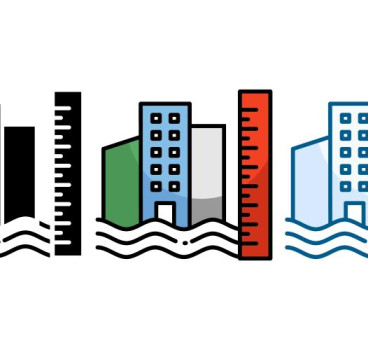Hearing damage on construction sites is about more than Big Ben
Our Members of Parliament are getting themselves into a bit of a tizz about Big Ben and the fact that its iconic bell will be silenced for up to four years while essential refurbishment work takes place. It's all in the cause of health and safety of course and it's easy to be sentimental when you're talking about one of the world's best known monuments.
But in reality, exposure to noise at work can cause irreversible hearing damage. It is one of the most common health problems and can be difficult to detect as the effects build up over time – and in the case of Big Ben, the experts are probably right – worker health and safety should come first.
The Health and Safety Executive (HSE) claim that industrial hearing loss remains the occupational disease with the highest number of civil claims accounting for about 75% of all occupational disease litigation.
If noise levels exceed 85 decibels there is a duty to provide hearing protection and protection zones. Big Ben certainly meets that requirement and while contractors can wear ear protection, the work is going be hard enough up in that tower without having additional distractions.
If in doubt, the Health and safety executive provide good advice regarding hearing if you visit their website - https://www.hse.gov.uk/pubns/indg362.html
Hearing loss caused on construction sites does not make the headlines that often, so in an ironic way we should be thanking politicians for at least drawing attention to the issue – albeit for the wrong reasons
There are a range of different types of hearing loss that can be caused from noise in the workplace, from temporary to permanent loss of hearing and conditions such as tinnitus or accoustic shock syndrome.
Certai professionms such as construction where there will inevitably be loud noise generated on an ongoing basis, workers are more liable to suffer conditions such as acoustic shock.
This is because the construction industry involves the use of many machines which produce excessive noise. Workers who are exposed to this without adequate hearing protection can suffer from reduced hearing which becomes evident as the worker ages – often many years after exposure to the noisy machinery.
The main culprits on building sites are:
1. Pneumatic drills
These produce a large amount of excessive noise and are used in various different ways in the construction industry.
2. Circular saws
Circular saws are typically used for cutting of wood and other materials used in the construction industry, such as cutting of floorboards in houses or frame work structure for dividing walls.
3. Nail guns or Hilti gun
This gun fires nails in to steel which can be used for the construction of various different structures, such as buildings and bridges.
4. Staple guns
Staple guns are used for various tasks in mining and this equipment has been known to produce excessive noise.
5. Grinders
Grinders are used to cut and shape metal which if used frequently produces not only excessive noise but quite often excess vibration running the risk of hearing problems and vibration conditions such as VWF.
All of these require contractors to where ear protection at all times – so you should answer the question – is this happening on your building site? In the case of Big Ben – I am sure we can all put up with a little silence for a few years – to ensure that a life time of silence is not an option for those that work there.
By Talk Builder
Additional Blogs

When fire breaks out who really knows the system
The story that caught my attention recently wasn’t about fire growth or building loss, it was about confusion. Specifically, the confusion faced by the fire service when arriving at buildings...
Read moreThe design and development of Nexus Layouts
When Zentia set out to rethink the suspended ceiling, the brief was clear: deliver greater creative freedom for designers, more distinctive visual identity for clients, and a solution that could keep...
Read more

The 100-year construction project or why longevity Is the new sustainability
For decades, the construction sector has defined sustainability through metrics such as operational energy, embodied carbon, material efficiency and circularity. These measures remain vital, but a...
Read more